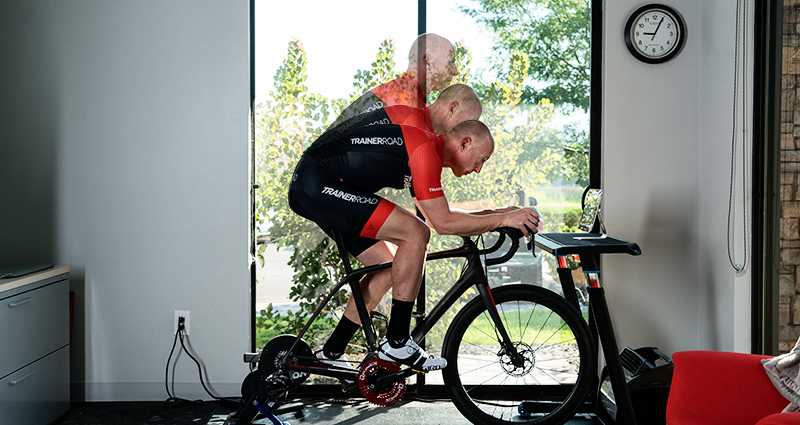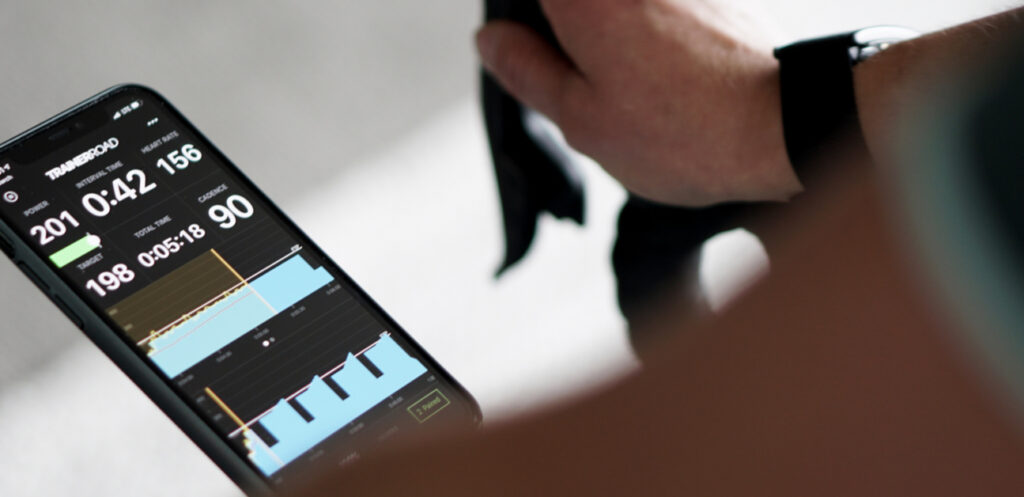Get Faster Now Without Aero Equipment

Faster time trials doesn’t mean you need the most aerodynamic equipment. Getting faster starts with doing the right things with what you already have.
Not everyone is ready to invest in the TT bike, the aero helmet, the aero bars, the aero everything … We’re here to tell you that purchasing all the aero gear isn’t requisite to being faster in your time trials.
Optimal Training for Time Trials
All the seconds you can shave off your time by purchasing aerodynamic equipment pale in comparison to the minutes you can shed from focusing on a discipline specific training program. Go for the big gains with the hard work. We can deal with the small stuff later.
Faster time trials require training your ability to pace high percentages of FTP for long durations in an often less-than-comfortable position. We train the ability to create time trial power, in a time trial position, for roughly time trial durations. In other words, we aim to increase muscular endurance at FTP for specific durations.
Targeting specific energy systems during training helps us become more proficient at sustaining higher percentages of FTP. When training with power, we use specific power zones as proxies for these energy systems. This type of training yields growth in muscular endurance, increased stamina, and enhanced familiarity in your positioning for both.
The most common of these power zones used to train for time trials ranges from work in the:
- Endurance zone (55% to 75%)
- Tempo zone (75% to 84%)
- Sweet Spot zone (84% to 95%)
- Threshold zone (95%-105%)
- VO2Max zone (105%-120%)
Growing muscular endurance requires focusing on stamina at a given power output. The power output we aim to maximize stamina at is as close to FTP as possible. It might even be above FTP depending on the distance of your event. As your training becomes increasingly specific to time trial efforts, you’ll increase training time in and around the ‘Threshold’ power zone.
Aero Positioning
There is a balance of power output and aerodynamic positioning while riding in the drops. Train with your head down in front of your torso, while still watching the road to familiarize yourself with the discomfort of this positioning.
Free Watts
Until you have your training locked down, you really don’t need to focus on purchasing aero equipment. There are a number of things you can do to get more aero without spending a dime. The aerodynamic improvements you need to make are the ones you can do with what you already have. Faster time trials come from all those little things adding up.
There is science behind many of our suggestions, and for those without it, these are the things we’d tell our friends to do. We may not have the data, but they make sense! Here is a list of all those little things you can try:
- Shave your arms and legs: Specialized Win Tunnel results reveal an average 01:10 saved over a 40 kilometer simulation from shaved legs, and an average 00:19 saved over a 40k simulation from shaved arms.
- Use a top-performing chain lubricant: Friction Facts data from 10 Ways to Increase Drivetrain Efficiency reveals up to a 4 Watt savings between the most and least efficient chain lubes. Remove the factory lubricant and re-lube with top-performing lube. (Try: Molten Speed Wax, Squirt Lube, Lilly Lube, Rock n Roll Extreme)
- Eliminate helmet strap slack: Swiss Side aerodynamics team wind tunnel results reveal up to a 4.4 Watt savings at speeds of 45kph just by eliminating sloppy helmet straps.
- Clean your drivetrain flawlessly: With over 100 moving parts, keeping your drivetrain clean will keep from absorbing more watts than necessary.
- Tightest jerseys/kit in your arsenal: Specialized Win Tunnel results reveal an average 00:45 saved over a 40k simulation by wearing a tight jersey/kit.
- Keep nutrition and spare-gear off your bike: Specialized Win Tunnel results reveal an average 01:16 saved over a 40k simulation by clean management of gels, nutrition, and spare-gear. While this test applies to a time trial specific bike, one can assume there is some time savings on a normal road bike as well.
- Clean cable management: Specialized’s aerodynamic R&D engineer, Chris Yu, claims this is a one way ticket to “unnecessary drag”. This is something we’re also strong proponents of.
- Check for brake rubbing: This may seem like a no-brainer, but it’s worth checking.
- Tubeless tires over latex; latex tires over butyl: Free watts from the right tire choices comes down to rolling resistance by eliminating friction between the tube and the tire. Of course tubeless tires eliminate that friction entirely, but new latex and butyl technology is bridging the gap.
- Tire choices: Tires require a balance of aerodynamics, rolling performance, puncture resistance, tire width, and comfort.
- We like Continental 4000s II for latex or butyl
- Tire Pressure: The right tire pressure can strike an optimal balance between rolling resistance and aerodynamics. FLO cycling has an article that can help you find that balance.
- No gloves: Try ditching them to eliminate any unnecessary drag that can be caused by bulky gloves.
- Read Matt Fitzgerald’s How Bad Do You Want It?: You can be the fittest, healthiest athlete in the field; if you don’t work on your mental strength, you’ll be leaving yourself at potential for your biggest disadvantage.
Takeaway
Save time in your time trials by controlling the small variables already within your grasp. They’ll add up.
Racing Tactics
Separating your time trial into two sections has positive psychological effects in your event. This strategy is known as a “negative split” — a racing strategy that breaks your time trial into two halves. Perform a negative split by focusing on racing faster in the second half of the race.
As a rule, stay in your aerodynamic positioning until your climbing speed is below 14 mph. Also, maintain your positioning on the bike as consistently as possible. A lot of speed gets left on the table with unnecessary movements.
Note: Drafting other riders as you pass will also shed time, but you’ll need to check the rules of your event to confirm that’s legal.
Takeaway
Perform faster time trials using a negative split, by refraining from frequent movements on the bike, and avoiding getting out of your aero positioning too soon on climbs.
Conclusion
Getting faster doesn’t just happen. It is the culmination of tons of small, everyday gains that help you become a stronger rider and faster time trialist. The most important factor that comes before all those smaller gains is your training. After that, think about the little aerodynamic details you can adjust without getting the extra gear. Finally, use racing strategies to your advantage, and in combination, clock faster time trials.
